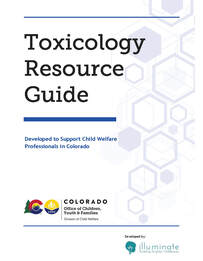General Guidelines to Consider for Toxicological TestingBoth targeted drug assays and comprehensive panels (7 to over 200 drugs) exist with various reference labs, and may include screening and confirmatory techniques and can test many common biologic matrices (urine, hair, blood, etc).
Urine Drug or Toxicology ScreensUrine Drug Screens are usually urine immunoassay/ELISA based tests, which are sensitive but not specific, and provide information on if a substance was present (qualitative), but not concentrations of the substance (quantitative). Urine Drug Screens can commonly test for: amphetamines, methamphetamines, MDMA (“ecstasy”), benzodiazepines, barbiturates, opiates, marijuana/THC, PCP, LSD, cocaine.
|
Confirmatory Testing
Confirmatory testing is the gold standard, can be from any matrix (urine, blood, hair, meconium, umbilical cord), and is usually High-Performance Liquid Chromatography (HPLC) or Gas Chromatography (GC) paired with mass spectroscopy (MS). It is a specific test, meaning false positives and negatives are rare, and can determine drug specific exposure.
- Confirmatory screening is recommended for most unexpected results, or concerns for positive exposures in children.
- Some reference labs will reflexively send confirmatory results when screening tests are positive, but check with your reference labs.
Drug Concentrations
Urine drug concentrations (also known as levels) are difficult to interpret clinically and they are rarely useful in determining the level of intoxication or exposure route. Blood drug concentrations can be a better indicator of potential level of intoxication. However, this can vary based on the the drug itself, as well as chronicity and timeline of use.
- Detection of a systemic drug exposure in a child is of concern, regardless of the concentration whether in the urine or blood.


